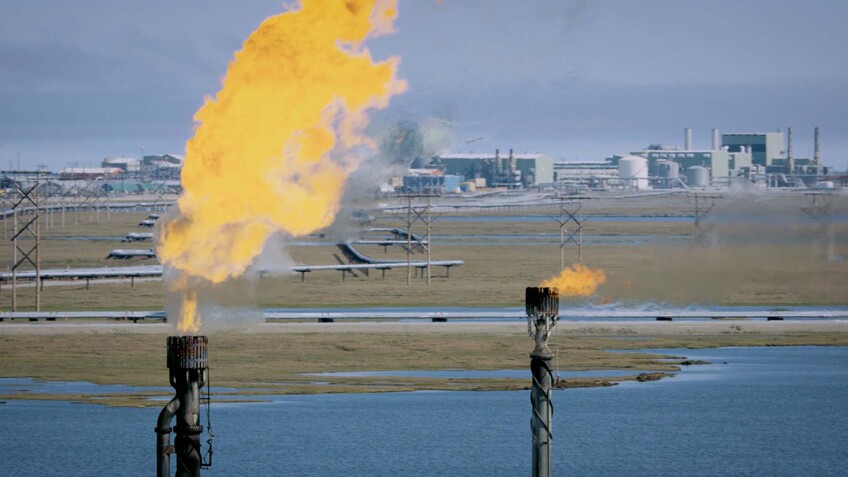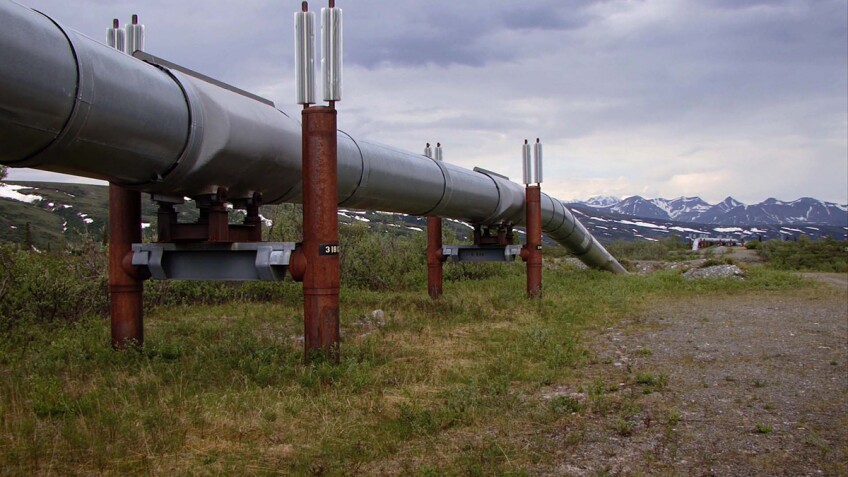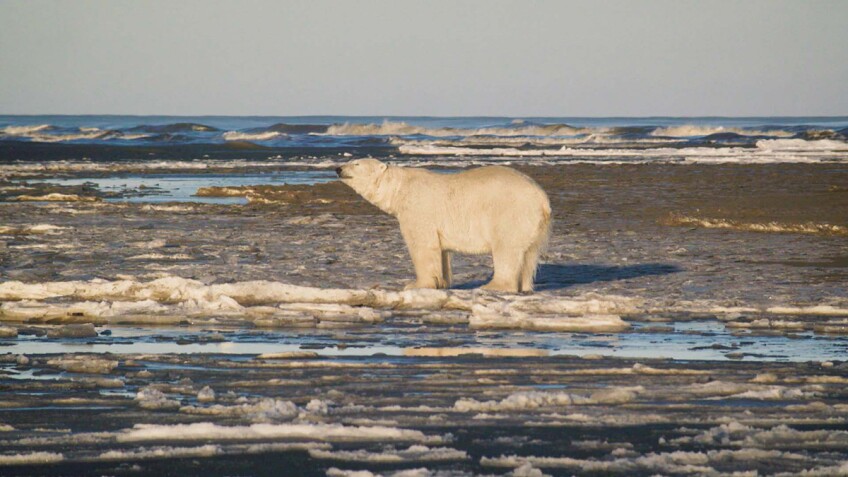Tensions Swell in Alaska between Powerful Native Oil Business and Local Youth

In Alaska’s remote, rural communities, many Indigenous residents depend on harvests of hundreds of pounds of wild fish and game every year, deeply linking their lives to the patterns of the state’s environment.

Climate change is warming Alaska faster than any other state, and causing major disruptions to that environment. So, in October, a pair of Indigenous teenagers brought a proposal to declare a climate emergency in Alaska to the state’s largest gathering of its Native people — the Alaska Federation of Natives’ annual convention.
The proposal passed, but not before drawing a backlash from other Native leaders, and shining a new spotlight on long-running tensions over development and conservation among the groups that advocate on behalf of Alaska’s Indigenous people. That’s because some of the state’s most powerful Native entities are major for-profit businesses heavily invested in the oil and gas industry.
The largest is Arctic Slope Regional Corp. (ASRC), whose 13,000 Native Iñupiat residents lease their private lands within the Arctic National Wildlife Refuge to oil companies. At the convention, the corporation’s board chairman, Crawford Patkotak, argued that the teenagers’ proposal should be modified to include language protecting oil development.

“We can’t be moving on emotion only,” Patkotak said. If environmental groups had their way, he added, “We wouldn’t be able to develop the oil we have in the ground. That would cripple us, economically.”
Convention delegates rejected Patkotak’s proposal. But the fissures exposed at the meeting only deepened over the next few months: In December, ASRC announced it would withdraw its membership from the Alaska Federation of Natives altogether.
Making sense of the controversy requires going back to the early 1970s, when Alaska Natives’ Aboriginal land claims had stalled the oil industry’s effort to build the trans-Alaska pipeline, thereby marooning the billions of barrels of oil that had been found at the Prudhoe Bay field.

To resolve the land claims and allow the pipeline’s construction to proceed, Congress passed the Alaska Native Claims Settlement Act in 1971, which set aside $960 million and 44 million acres — a little more than 10% of the state’s total area — for Native groups. Rather than perpetuating the Lower 48’s reservation system, where Indigenous people were set apart from white settlers, the act aimed to integrate Alaska Natives into the capitalist economy, by splitting the money and land between a dozen newly established, for-profit corporations. The for-profit businesses would be organized by region and geared toward generating economic benefits for their Native shareholders.
The corporations aren’t the only Native-led organizations charged with looking out for the well-being of Alaska’s Indigenous people; the Alaska Federation of Natives also includes representatives from tribal governments and social service providers.
But since the 1970s, the Native corporations have grown into some of Alaska’s most powerful institutions in the realms of politics and business.
“The principal voice for Native Alaska comes from the regional, for-profit corporations,” says Edgar Blatchford, associate professor of Alaska Native studies at University of Alaska Anchorage.
Other Alaska Native corporations do business in the mining, timber and commercial fishing industries, in addition to oil drilling. But ASRC has the highest profile, and its annual revenues exceed $3 billion.
More on Alaska and the environment
It’s long pushed for expanded oil development on the North Slope, spending $590,000 on federal lobbying in 2017, the year that Congress passed the tax reform package that opened the Arctic Refuge to leasing. After the legislation passed, ASRC collected a $22.5 million payment from BP and Chevron under a deal it struck decades ago, granting the companies exploration rights to 150 square miles of corporate lands within the refuge’s boundaries.
ASRC also has a subsidiary, PetroStar, that owns two oil refineries in Alaska and sold more than 350 million gallons of oil products in 2018, the most recent year for which figures are available. Another ASRC subsidiary works in oil field services, doing engineering, construction and permitting for some of the world’s largest oil and gas companies in Alaska and the Gulf of Mexico.

Last year, the corporation paid dividends of $7,000 to shareholders with the typical 100 shares. But as its board chair pushed back against the proposed climate change emergency declaration at the October convention, one of the measure’s sponsors, 15-year-old Nanieezh Peter of Fairbanks, argued that regional corporations like ASRC are “only thinking about economic growth.”
“We need to be thinking about all of our futures, too,” Peter said. “It’s all of our traditions and rights and cultures to keep this land healthy, and to keep our people happy. And economic growth and money is not a part of that conversation.”
While ASRC is one of Alaska’s leading Native voices, other Indigenous residents, like Peter, are still trying to tackle the problem of climate change head-on.
The Juneau-based Central Council of the Tlingit and Haida Indian Tribes drafted its own 55-page climate change adaptation plan, laying out its options to tackle problems like threats to subsistence salmon runs and wild berry harvests.
A tribal leader from the northwest Alaska town of Kotzebue, Melanie Bahnke, co-chairs the National Congress of American Indians’ climate action task force.
And then there are youth leaders like Peter and Quannah Potts, who presented the convention proposal, and Ruth Miller, an Anchorage climate activist who traveled to Madrid last month to push for action at the U.N. Climate Change Conference in Madrid.
“We're trying to elevate more Indigenous voices, as Indigenous youth, to be able to recognize this issue and take action,” Potts said at the convention. “We shouldn’t have to tell people in charge that we want to survive.”



